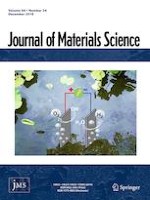13.08.2019 | Chemical routes to materials
Design and synthesis of La3+-, Sb3+-doped MOF-In2S3@FcDc-TAPT COFs hybrid materials with enhanced photocatalytic activity
Erschienen in: Journal of Materials Science | Ausgabe 24/2019
EinloggenAktivieren Sie unsere intelligente Suche, um passende Fachinhalte oder Patente zu finden.
Wählen Sie Textabschnitte aus um mit Künstlicher Intelligenz passenden Patente zu finden. powered by
Markieren Sie Textabschnitte, um KI-gestützt weitere passende Inhalte zu finden. powered by
